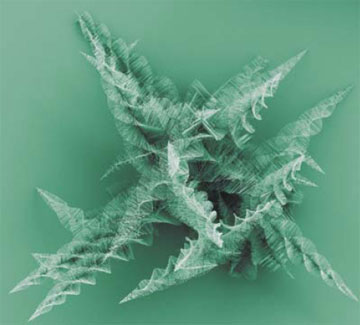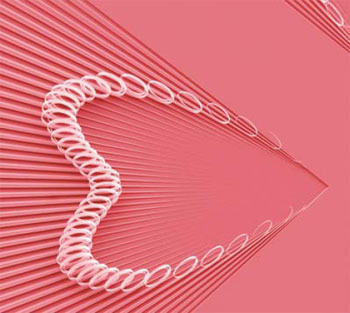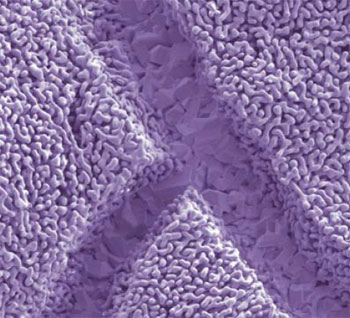| Posted: October 28, 2008 |
Cover art winners of nanotechnology image competition |
|
(Nanowerk News) In honor of its first issue, Nano Today: An International Rapid Reviews Journal ran a best nano-related image competition for publication on the cover for one of six 2009 issues.
|
|
From over 300 entries, the journal presents the winning and runner-up images on its website. To see all the winners go to the Nano Today Cover Competition website.
|
|
Here are some of the winners:
|
 |
| Spiraling pine tree-like PbS nanowires are evidence of nanowire growth driven by screw dislocations without the help of metal catalysts. Screw dislocation drives the rapid growth of the nanowire tree trunk and causes the lattice of the trunks to twist (called "Eshelby Twist") and their epitaxial branches to spiral. See Science 2008, 320, 1060. Matthew J. Bierman, University of Wisconsin-Madison, USA.
|
 |
| The figure shows an array of spiral nanoribbons self-organized from Si/Cr bilayer by self-scrolling technique. The Si and Cr layer has a thickness of 35 nm and 10 nm, respectively. This self-scrolling technique allows you to fabricate 3-D nanostructures from various materials such as semiconductor, metal and polymer. Moreover, by applying this technique, the geometrical parameters of helical nanostructures can be precisely controlled. Helix is a fundamental shape in nature. The potential applications of these freestanding helicalnanoribbons can be foreseen in many areas of modern nanotechnology, in particular force sensors, flexible electronic devices, and linear-rotary motion converter.
Li Zhang, Lixin Dong and Bradley J. Nelson, ETH Zurich, Switzerland
|
 |
| THE LAMBDA: Hydroxyapatite nanopowders produced by acid-base method were coated on titanium substrates by using electrophoretic deposition method. As mentioned in literature, besides the advantages of the precipitation method, cracks on coating surfaces were observed. After sintering process in air atmosphere, lamdba-shaped sintered hydroxyapatite powders were presented in this figure.
Onder Albayrak, Bogazici University, Turkey
|



